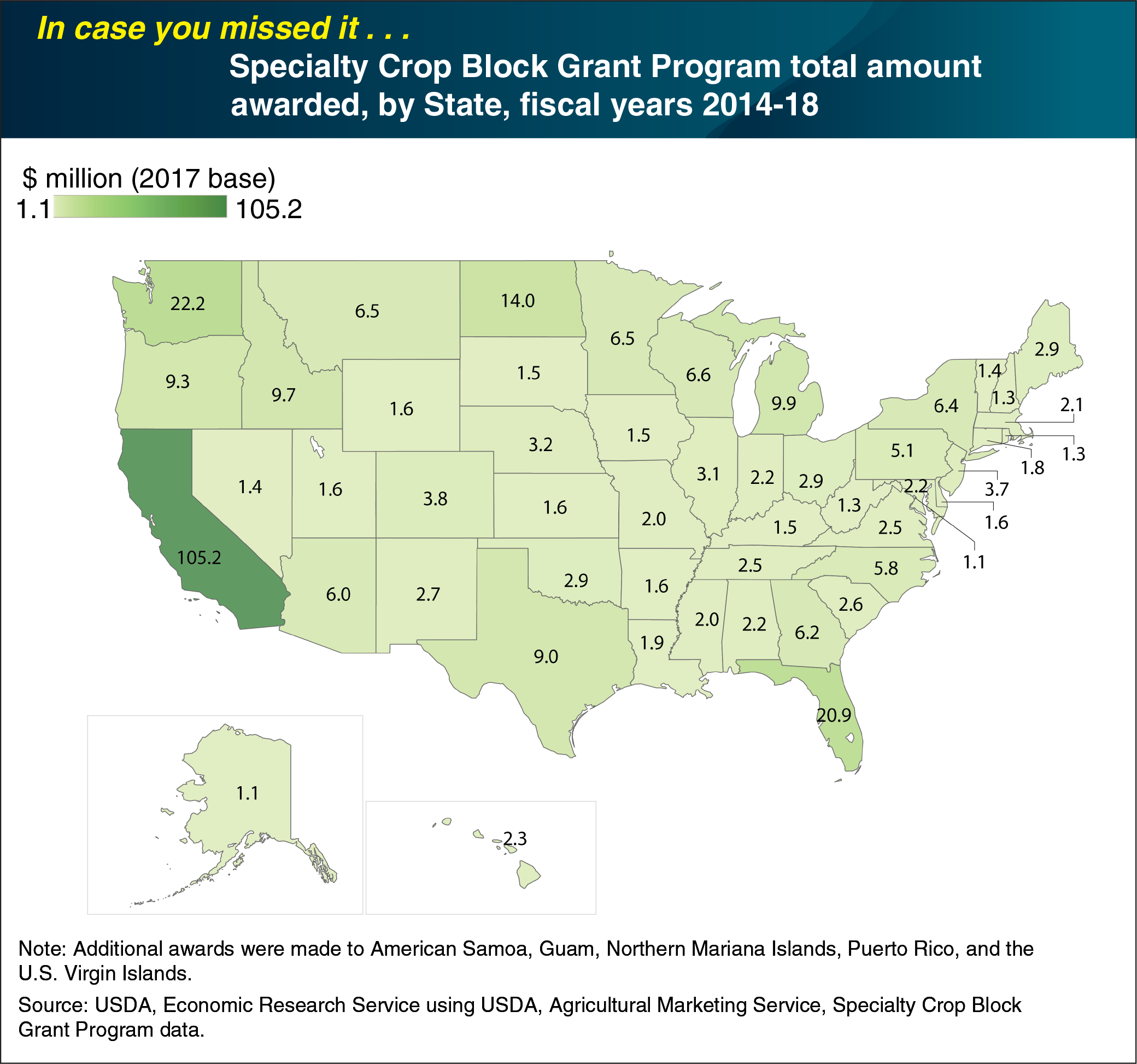ICYMI... More than half of Specialty Crop Block Grant funds were awarded to California, Washington, and Florida between fiscal years 2014–2018
- by Agnes Perez and Utpal Vasavada
- 10/24/2019

The 2018 Farm Bill reauthorizes the Specialty Crop Block Grant Program and extends funding levels through fiscal year 2023. Under the program, block grants are awarded to each State to support State and multistate projects that aim to enhance the competitiveness and long-term success of U.S. specialty crop producers. Specialty crops are defined as fruits and vegetables, tree nuts, dried fruits, horticulture, and nursery crops (including floriculture), whereas non-specialty crops include grains and commodities such as rice, wheat, and dairy products. The specialty crop grant program objectives include: broadening domestic and international markets for U.S. producers, supporting producers with research and development related to specialty crops, increasing market availability and access, and addressing challenges confronting specialty crop producers. Grant projects span topics in marketing, research, pest and disease management, food safety, and the like. The amount of grants awarded to a State is based on production value and acreage in specialty crops. Under the 2014 Farm Bill, grants awarded totaled $329.1 million for fiscal years 2014–18. Nearly half of the total went to California, Washington, and Florida—key fruit- and vegetable-producing States. As the leading producer of fruits and vegetables, California, alone, received 32 percent of the total grant amount. This chart appears in the specialty crops section of Agriculture Improvement Act of 2018: Highlights and Implications, released in February 2019. This Chart of Note was originally published March 27, 2019.

